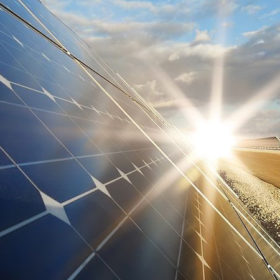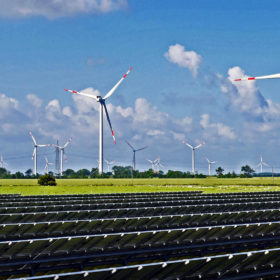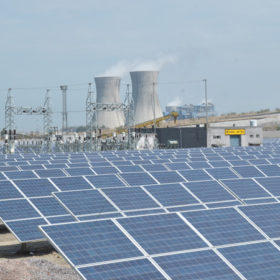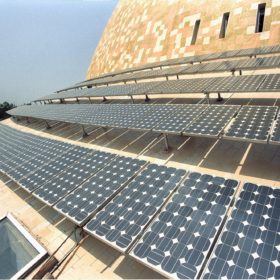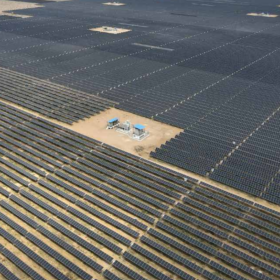German company Phaesun installs solar-powered water desalination plants in Gujarat
The pilot plants—installed at a temple and a school—work on a membrane-based electrodialysis technology to provide clean drinking water.
Clean energy investment in developing nations slumps as financing in China slows: BNEF
Clean energy investment across 104 emerging markets fell sharply by $36 billion in year 2018 from the previous year, even as their coal burn surged approximately 500 terawatt hours to a record high of 6.9 thousand terawatt-hours. Though the decline in clean energy investments was driven largely by China, inflows to India and Brazil also slipped by $2.4 billion and $2.7 billion, respectively. India, however, emerged as the market with greatest renewables potential.
India touches solar power capacity of 32 GW
As of October 31, a cumulative renewable energy capacity of 83.38 GW was installed in the country, which included 31.69 GW from solar, 37.09 GW from wind, 9.95 GW from biomass and 4.65 GW from small hydro.
Net metering policy change could mean end of rooftop solar in Maharashtra
The recently proposed guidelines allow electricity cost reduction of only Rs 3.64/unit for commercial and industrial consumers, which is not even sufficient to recover the capital costs of setting up the solar infrastructure.
‘The right vision is needed to unleash the potential of floating PV in India’
The technology brings environmental, economic and social benefits, says the senior VP of Ciel et Terre’s Indian business. However, the nation’s obsession with price dictating business decisions, he adds, ignores the truism that ‘in the long run, cheap products lead to more cost’.
NTPC extends bidding for 1 GW solar project
December 3 is the new bidding deadline for the grid-connected solar project that is to be set up on develop-build-demonstrate-transfer basis anywhere in India. Techno-commercial bids will open on December 4.
DVC tenders 50 MW grid-connected solar in Jharkhand
Bids can be submitted till December 27 for the project which shall come up at the state-run power producer’s Panchet project in Dhanbad district. The project shall be awarded through tariff-based domestic bidding followed by reverse auction.
Indian Railways eyes 500 MW rooftop solar by 2021-22
While 95.67 MW has already been installed on various railways buildings, 248.46 MW capacity—awarded by Railway Energy Management Company Limited—is under different stages of execution.
Kerala extends off-grid solar incentive for two years
The order enabling payment of a rupee for every kilowatt-hour generated by off-grid PV systems has been extended until October 2021 because of anticipated delays in the state electricity board hitting its renewable purchase obligation.
Cheap Indian imports claim prompts Bangladesh to introduce solar standards
Dhaka has heeded complaints about Indian manufacturers allegedly dumping sub-standard PV products over the border and issued a requirement for modules, inverters, charge controllers and batteries to attain IEC electrical standards.
